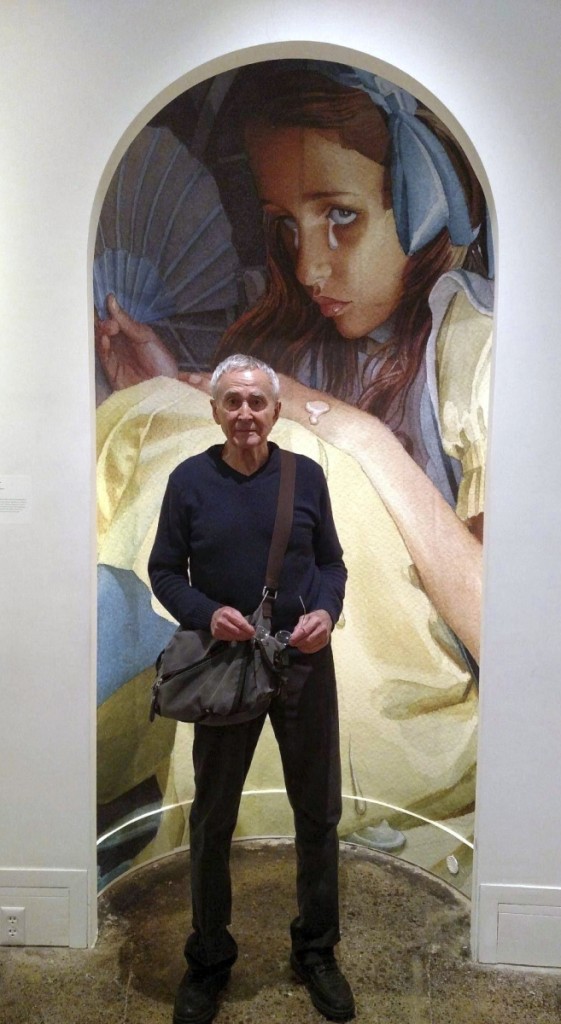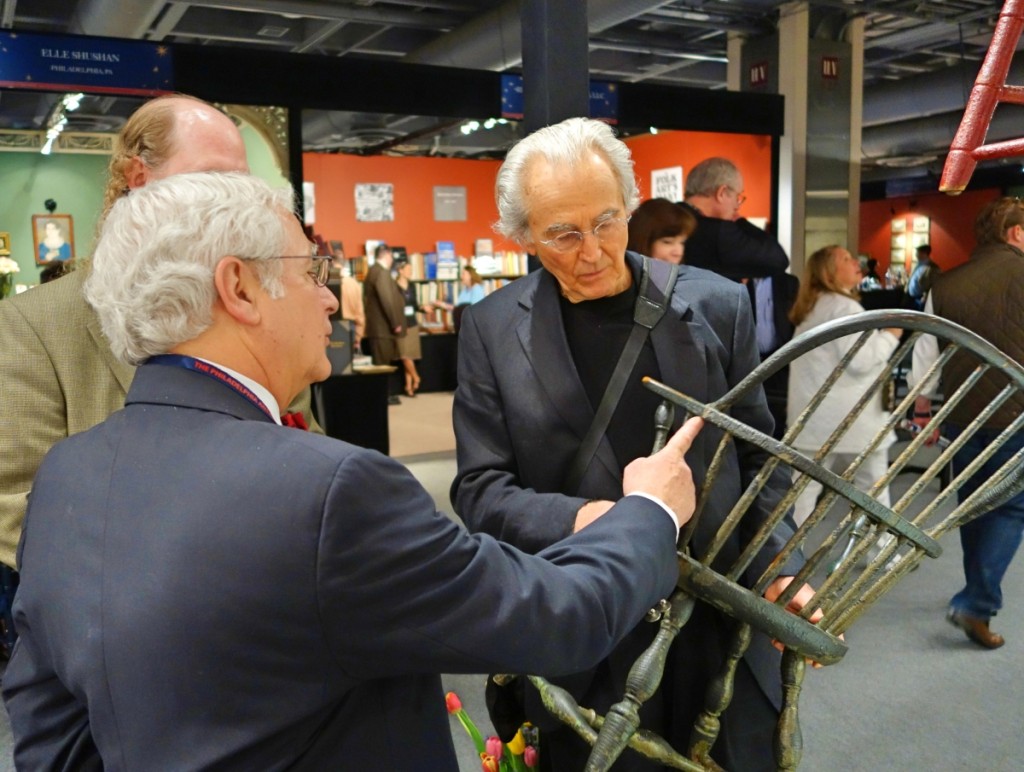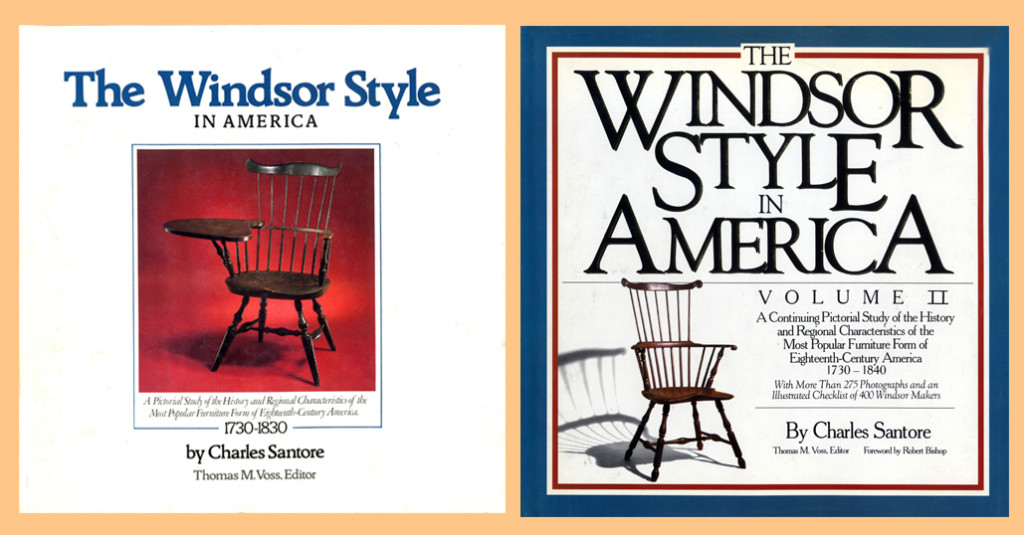
This undated photo provided by Christina Santore shows her father, Charles Santore. Santore, the illustrator known for his richly detailed and whimsical interpretations of classic children’s books, has died. He was 84. His daughter, Christina Santore, says her father died Sunday, Aug. 11, 2019, after a brief illness in Philadelphia, where he was born and raised and where he worked throughout his career. (Christina Santore via AP)
By Kristen De Groot
PHILADELPHIA (AP) – Charles Santore, an illustrator known for his richly detailed and whimsical interpretations of classic children’s books, has died, his daughter said Friday.
Christina Santore said her father died Sunday after a brief illness in Philadelphia, where he was born, raised and worked. He was 84. [He died August 11, 2019.]
He spent more than three decades reimagining classic children’s tales like L. Frank Baum’s The Wizard of Oz, Beatrix Potter’s The Tale of Peter Rabbit, Grimm fairy tales and Aesop’s fables.
“Charlie Santore was an artistic treasure in the industry. He created worlds that were familiar but elevated them beyond the scope of our imagination,” said Running Press Kids creative director Frances Soo Ping Chow, who worked with Santore for more than a decade. “Each extensively researched and composed illustration was created with an eye to detail that was uniquely his. His lighting, reminiscent of Maxfield Parrish, enveloped colorful characters with lush atmospheres to create stunningly beautiful landscapes.”

Arthur Liverant (left), pictured here with Charles Santore at the 2014 Philadelphia Antiques Show, said, “Charlie was a giant in the field of Windsor chairs, and his two volumes featuring photographs and illustrations really put Windsor chairs in front of everybody in the collecting world. He provided an outstanding reference for how the English Windsor transformed into the American Windsor. The American Windsor chair, for those that collect it, is very different than the English form. You sit in them — and sure, they both accomplish the mission. But the American Windsor chair is a very unusual and pure American form. And so this form was used in the homes of the colonists and also out in the country where people sat in their homes, their taverns and wherever they would meet. It was the furniture for everybody. And Charlie was that kind of person. He was easy to speak to, he was thoughtful, he was extremely humble and he had a great eye.”
Santore grew up in a working-class Italian neighborhood in south Philadelphia and described himself as a tough kid who was compensating for a stutter by throwing punches, smoking at age 11 and hanging around pool halls, according to an interview in Communication Arts magazine. He drew portraits of neighborhood characters for cash and was encouraged by teachers to focus on art. He said his world opened up when he was accepted to Philadelphia’s Museum School of Art, which is now The University of the Arts.
Santore started off as a magazine illustrator, had a successful freelance advertising career and frequently created portraits of celebrities for TV Guide in the 1970s and 1980s. His Redd Foxx TV Guide cover was recently added to the collection of the National Portrait Gallery in Washington, DC. Other covers are in the collection of the Woodmere Art Museum. Santore’s work appeared in the Saturday Evening Post, Esquire, Good Housekeeping and he even created a poster for the 1964 World’s Fair.
After more than 20 years doing magazine work, Running Press approached him to illustrate The Complete Tales of Peter Rabbit and Other Stories in the 1980s. He was hooked.
“An advertisement runs in a magazine today, and someone wraps fish in it the next day,” Santore told Communication Arts. “With a book, you know it’s going to be around.” He sometimes took years to finish paintings for books, working primarily in watercolor.
The Woodmere Art Museum hosted a retrospective of his work last year. He is the recipient of numerous awards, including the Society of Illustrators Award of Excellence and the Hamilton King Award.
His works are in the permanent collections of the Museum of Modern Art in New York, the Brandywine River Museum of Art outside Philadelphia and the Free Library of Philadelphia.
“Charlie’s imagination is extraordinary,” said John Whalen, publisher of Cider Mill Press, who commissioned Santore to create many works and compared his talent to Norman Rockwell and N.C. Wyeth. “He would take a scene and think ‘How would a child see that in their head?’ He helped guide them into the world of Charles Santore.”
Santore is survived by his three children, Christina, Charles III and Nicholas. His wife of 55 years, Olenka, died in April.
Editor’s note:
Charles Santore, a renowned authority on Windsor seating, wrote what we have come to know as the definitive books on the subject: The Windsor Style in America: A Pictorial Study of the History and Regional Characteristics of the Most Popular Furniture Form of Eighteenth-Century America, 1730-1830, 1981, and The Windsor Style in America, 1730-1840, volume two, 1987. Edited by Thomas Voss, both books are still available.
Santore lectured on Windsor furniture at Yale University, the University of Pennsylvania and at meetings of antiquarian societies around the United States; he served as an advisor to many museums, including Independence Historical National Park and Mount Vernon.
“He was one of the very greatest artists of our city,” said William R. Valerio, Woodmere’s director and CEO. “It is a great loss.” Santore was a worldwide expert on Windsor chairs. He consulted for auction houses on a regular basis and was considered an expert on American antiques, Valerio said.
A comment found on Woodmere’s Facebook page said, “As we reflect on the life and legacy of Charles Santore, we are filled with gratitude. Grateful to have worked with Charlie, the artist; and through that work, the opportunity to know Charlie the person. We are grateful he chose to share his talent, and that he trusted us to share his story. Philadelphia has lost a gem, in so many ways.”
Charles Santore: A Remembrance
You could set your tall case clock by Charlie: Each morning at the same time, he would walk by our house in Center City Philadelphia en route from his home to the studio on 20th Street where he worked every day creating beauty. From this power spot, he would call in to Terry Gross on NPR to discuss worldly matters, pore over auction catalogs, contact dealers and collectors, write books for children and draw his magical illustrations. He also shared his extensive knowledge of Windsor chairs by writing the iconic, The Windsor Style in America, Volumes I and II.
Charlie had a unique way of looking at the world of art and antiques, which we credit to his savvy South Philly roots and his extraordinary intelligence. He had a particular approach to his work, which was to delve into the heart of Dorothy when illustrating The Wizard of Oz and into Alice when illustrating Alice’s Adventures in Wonderland, re-reading the books many times to find the characters’ core as a way in. This deep attention to detail and this fresh vision made him a great success in his chosen field and beyond. In 2018, Woodmere Art Museum honored Charlie with a retrospective of his work, “Fifty Years of Art and Storytelling” which included his commercial work of the 1960s to his most recent children’s books.
With Olenka, his wife and Muse of 55 years, whose passing preceded his by four months to the day, he created a loving home for their three children, Christina, Charlie and Nicky, and their families and remained close to his brothers, Richie and Joe. But together, they did more. Armed with taste and knowledge, passionate but precise, they sought out the best of the best of Americana: Windsor chairs, tall case clocks, paintings, carvings, sculpture, pottery and painted furniture. Charlie was a famous raconteur, and his tales of discovery and the hunt were riveting. We eagerly awaited the next installment of this merry chase.
And so as Charlie returned from the studio each day, he would pass our house right on time and call out “anything new?” Jim would beckon him in, and the fun would begin! But the memory we hold closest is the last summer Charlie and Olenka visited us in Maine. As we sat on the porch watching the sun set over the water, we asked Charlie to sing “Danny Boy.” It was a perfect Maine evening with a brilliant sunset, and the haunting melody in Charlie’s distinctive voice lingers still. He was one of the Tall Ones.
—James and Nancy Glazer





